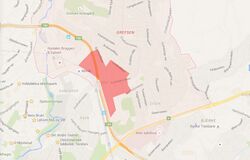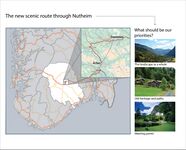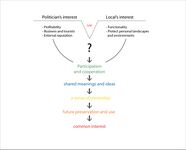LED 2016 Group F Landscape Democracy Challenge 1: Difference between revisions
Jump to navigation
Jump to search
| Line 45: | Line 45: | ||
== References == | == References == | ||
*.. | *https://no.wikipedia.org/wiki/M%C3%A6lefjelltunnelen* | ||
*.... | *http://www.hjartdal.kommune.no/nb-NO/Politikk/~/media/Hjartdal/Dokumenter/Moteboker/2014/Innkallinger/20140505_fon.ashx | ||
Revision as of 09:00, 4 May 2016
Please add the title of your case study here and replace the dummy image with a characteristic image of your site
| Place name | add name | |
| Location | add location | |
| Country | add country | |
| Author(s) | add author | |

| ||
Rationale: Why have you chosen this case for the landscape and democracy seminar?
- On my way to work, cycling form Svartdal to Seljord, I repeatedly risk my life, being overtaken by big trucks. Despite the fact that the road is narrow, curved and steep, it still counts as the main transport route between east and west of Norway. But in 2013 a new major national road investment project started; a 9,4 kilometer long tunnel between Seljord and Hjartdal will liberate the small villages along the old road from being polluted by noisy monsters. Simultaneously a new comprehensive improvement project of the old curved route, “The experience route through Nutheim”, is being planned in secret, by the politicians in cooperation with the public road departure in Norway. The project itself is a wonderful initiative, and will benefit the inhabitants if it is done the right way. I think it is an interesting case to study as a landscape democracy challenge in the way the planning process has been done; the fact that the municipality has been planning it for several years without even mentioning it for the inhabitants, at least I haven’t heard about it until a month ago.
Representation of your observations
- you are basically free to use one or a mix of different presentation techniques
- possibilities are: analytical drawings, graphical representations, collages, video clips, comic/graphic novel, written essay/visual essay
- please add any visual material to the gallery, videos can be placed below, you may add text as you like
- Yourfilename4.jpg
case representation
Reflection
What are the major challenges for changing the situation?
- In this case it is still a lot to do for involving the inhabitants, although it would have been better to inform and include the users at an earlier stage. The project is tightly bound to the everyday landscape of the locals, and will influence the way they move and uses their environment. The importance of building a participatory platform where the users can express their thoughts and ideas, is incredible important for creating enthusiasm and later use of the area. Recently it is actually been established a representative, local group from each village, whose task is to convey the opinions of their local community to the bigger working team. But as the project surprisingly was announced for the locals, without any prior notice, it is already been created a gap between the locals and the politicians. The importance of informing the users at an early stage in the process is absolutely crucial for creating the goodwill and engagement required to form a good partnership.
What could be a starting point for democractically-based change?
- To achieve a common understanding of the project it is important that politicians together with the public road department show interest in the local people and listen to what they have to say. It is always a dilemma between municipal interests and local interests, which often make democratic processes difficult. There are several aspects in such a big project, but the personal knowledge can only be contributed by the locals, and such information, I think, is always unique for the project. Another idea might be to use new creative methods to delimit the gap between the politicians/planners and the locals/users. Maybe an open-air meetings in the landscape, can switch the democratic scene from politician`s comfort, to the local sense of belonging? But perhaps most important, to get the democratic processes working, the information has to reach everyone. Everyone must have the opportunity to express their feelings and use of various means of disseminate information is necessary.
References
- https://no.wikipedia.org/wiki/M%C3%A6lefjelltunnelen*
- http://www.hjartdal.kommune.no/nb-NO/Politikk/~/media/Hjartdal/Dokumenter/Moteboker/2014/Innkallinger/20140505_fon.ashx
- Please make sure that you give proper references of all external resources used.
- Do not use any images of which you do not hold the copyright.
- Please add internet links to other resources if necessary.
About categories: You can add more categories with this tag: "", add your categories


